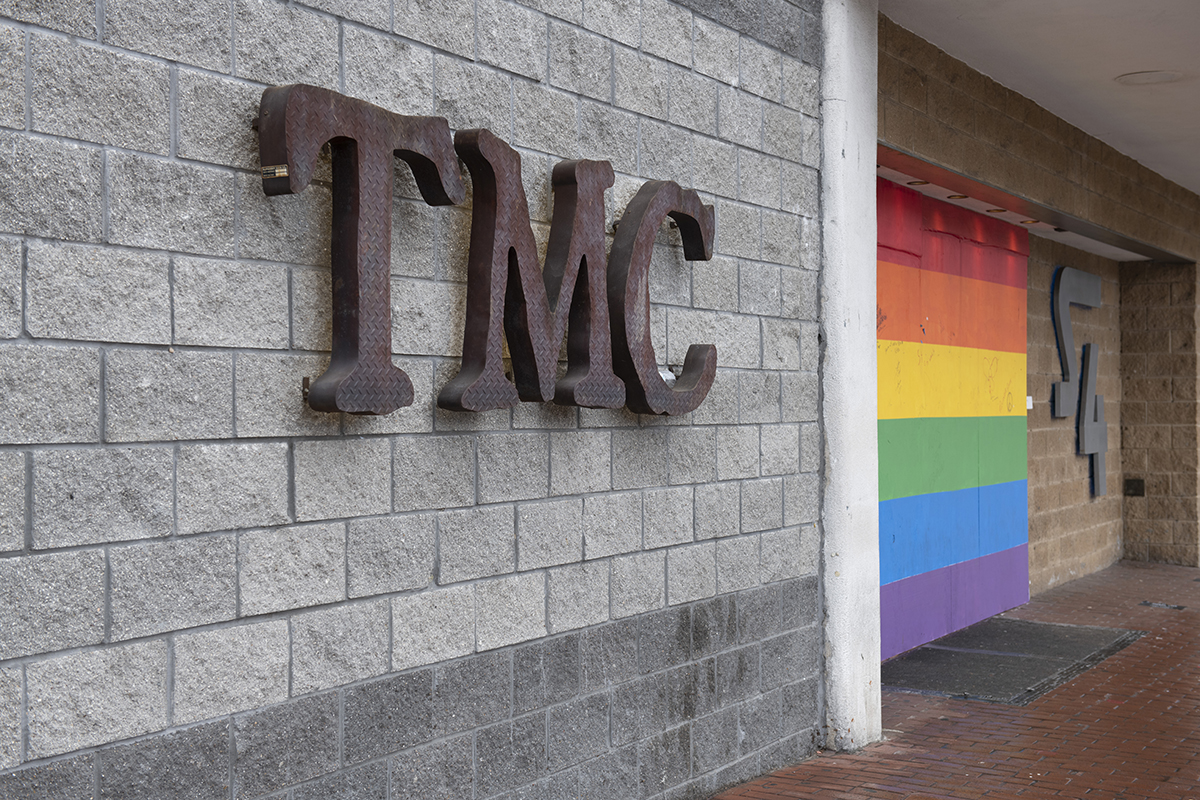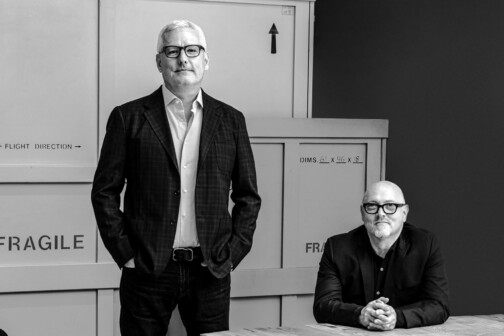Last fall, Dallas was abuzz with news of developer Mike Ablon’s latest project. His company, PegasusAblon, had partnered with Caven Enterprises on a most ambitious build: two high-rises set right behind a row of Caven’s beloved bars on Cedar Springs Road.
The mixed-use towers are slated to be a sky-grazing 260 feet. Ablon envisions a plaza-like gathering place—what the developer calls an “urban room”—with access to green space, retail, and restaurants. Ablon likens it to a modern piazza in that it’s tucked away from the main drag. Then there’s the 70-foot waterfall feature, too. In the February issue of the magazine, we ran a repurposed version of the piece from last year alongside a story that was published in D in 1979 about Caven opening a few gay bars on the block. We’ve remastered the latter, and it remains a fascinating snapshot.
And because they’re online today, I figured it was a good time to catch up with Ablon about what could be the next iteration of Cedar Springs. He will need the city to issue a zoning change to allow for how high he wants to build.
There are, of course, worried parties. Nothing this tall—or this ambitious—is present on this portion of Cedar Springs. The first worry remains, as is often the case for any major neighborhood change, how such towers will affect—or what detractors might describe as conflict with—the historic and current sensibilities of Oak Lawn. The historically LGBTQ neighborhood consists of, for now, mostly low-slung buildings that don’t top 36 feet.
Outreach has been full steam ahead. They’ve sent mailers. They’ve participated in a number of meetings and Zoom calls with neighborhood groups. “You find out where the sensitivities are,” Ablon says. That means the bigger issues of parking and outlets and access, but there’s nary a detail too small, from questions about dog parks to Amazon package lockers. Ablon say they have a lot support in writing. Though there are some who are still hung up about the height of the towers. He will likely need the city to issue a zoning change to allow for them.
“There are gonna be some people are who just allergic to the notion of height,” he says. “You’re always going to have people who don’t want it no matter where you go, no matter what you do.” What is currently allowed on the site (Planned Development District 193, subdistrict 19 to be precise) cannot be above 120 feet tall. Again, Ablon is pushing for something more than double that. As of right now, Ablon is forging ahead with the proposed plan, gathering up as much community support as they can muster before they submit their plans to the city for approval, which is their next step. No date set on that yet.
He argues that granular conversations about height don’t account for how the development feels from the street, which is what really matters. With the site set behind the bars—which are being preserved, a promise no other developer Caven consulted would make—the buildings won’t feel out of scope with other high-rises in the area.
Ablon refers to his successful redevelopment of Design District, where concerns boiled down to, he says, “Is this really going to still be the Design District?” Similarly, he suggests, those with varying degrees of investment in Oak Lawn—be it business, community, historical, architectural, personal, or a combination thereof—are really wondering if the height will affect the context of their neighborhood. Will it still feel the same? To which, Ablon responds, “You look at them and say, ‘Not only does it matter to you, not only does it matter to the city, but it deeply matters to me and we’re going to preserve it at all costs.’”
That’s why, for Ablon, the best part of outreach so far has been digging into those community matters. When you talk to “the people who call Cedar Springs home for their community or home for the business or home for where they live,” he says, “you get remarkable stories about the history of the street and of those buildings and what it means to them and, for me, that is fantastic.”
“You’re going to get some tweaks out of that to dial in what meets the heart of the community—that’s just a part of the process.” Ablon didn’t share what those revisions might be (this isn’t his first rodeo) as they’re subject to change throughout the process.
Ablon says he hears about heart more than height: “‘Promise me you’ll keep the heart of the community intact.’ That’s the real conversation.”
It’s also why we’ve spruced up and republished that 1979 saga about Oak Lawn’s evolution into the LGBTQ community it is today, which you can read here. The future of such LGBTQ fellowships and allyships, born from the bigotries of not that long ago, are more important than concrete and glass. And, if this historical look-back is any indication, much more sturdy.
Get the D Brief Newsletter
Author






